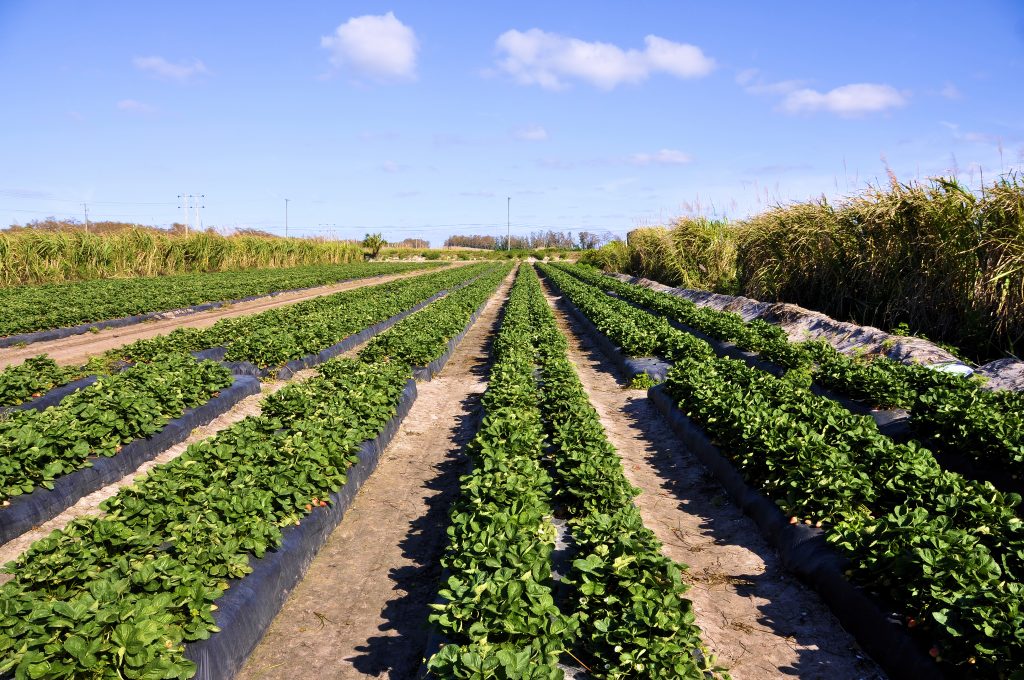Clemson Extension agents provide updates in The South Carolina Grower this week about the status of various crops being produced throughout the state.

Coastal Region
Rob Last reports, “Strawberries in the area look good, with some new leaf development emerging from the crown. Boron applications are being applied, either as a foliar application or through the drip system. Remember, we are looking to apply 1/8 pounds of Boron per acre. Over application of Boron can be phytotoxic and detrimental to the plants. Plans are also being made to begin fertigation applications later this month to aim for the first pick in early April. The initial target is to apply 5.25 pounds N per acre. After the first application, a tissue test should be taken to refine fertility recommendations further. Please also remember we have the Drip Fertigation calculator to make the calculations more straightforward. Brassica transplants are going in the ground this week and are looking good. The pruning of peaches and perennial fruit is pretty much complete, and we await the arrival of spring.”

Zack Snipes reports, “I was out and about looking at strawberries this week, and I can’t say that at this point in the season it’s the prettiest I’ve ever seen it. We are getting out our boron applications and beginning to apply our fertilizer via the drip system, so things might turn around here soon. The farms that I have been on have done a really great job of cleaning out dead tissue including leaves and blooms. This is the best and most critical disease management tool we have. Some of our weed species are creeping up through our plant holes and need to be taken care of before we start running fertilizer. Speaking of fertilizer, have you tried our new DRIP FERTIGATION CALCULATOR? I went to a few farms last week and they had not tried it out. Why guess on your fertilizer applications when you can really dial it in and save money and boost yield?”
Midlands

Justin Ballew reports, “We’ve had a few nice warm days here in the Midlands, but we’ve also had a couple of hard frosts. I’ve seen some rough-looking brassicas over the last week. Cool soil temperatures have really reddened/purpled up the leaves in a lot of fields. I’ve seen some bacterial foliar disease in places also. I’ve even seen a few diamondback moth caterpillars around. Strawberries are coming along slowly. Some growers have already begun fertigating, and more will begin this week. One grower told me they were ready to start saving blooms and were aiming to start harvesting in mid-March. I saw a few spider mites last week for the first time this year, so it’s time to keep an eye out, especially when we start frost protecting with row covers.”
Sarah Scott reports, “Still planting peach trees and working on finishing up pruning. Dormant oil sprays along with copper are being applied. We have good accumulation on chilling hours so far, but we will have to see how these next couple of weeks of warmer temps progress things.”
Pee Dee

Bruce McLean reports, “Here we are in mid-February, and we are looking at fluctuating temperatures in the weather forecast. There are quite a few 70+ degree days in the forecast. This seems to be a recurring theme. Don’t get me wrong… I love warm weather. But warm weather in February through mid-March can cause a lot of problems with the blueberry crop, mainly waking them up too early. Blueberries are one of those plants that once the chill requirements are met, the plant just needs some warm weather to start the blooming process. Once this process starts, there is little that can stop it. Early blooming and a late-season freeze are not a good combination. The more that a bloom matures the less cold it can tolerate. A bud that is at the bud swell stage can handle 10 degrees to 15 degrees Fahrenheit (F) with no significant problem. A bud at early pink can only handle 23 F to 25 F. A late pink bud can handle 24 F to 27 F. Early bloom is 25 F to 28 F. Full bloom is around 28 F, and petal fall is 32 F. They become more sensitive to cold as they mature. Right now, we seem to be okay, but with an onset of warm weather, that can quickly change.”
Upstate
Kerrie Roach reports, “A few warm days last week has pushed some ornamental cherries to bloom, but nighttime cold temperatures should keep our tree fruits dormant for a few more weeks. Pruning on peaches and apples is still ongoing in the field. A field demo for Master Gardeners has reaffirmed the importance of training and pruning starting from selection and planting. Attempting to establish structure later in the tree life is frustrating, time consuming, and stress inducing on the plant. Take the time in those first few years to create scaffold limbs, nicely spaced whorls, and good leaders, depending on the desired form (open center or central leader).”










